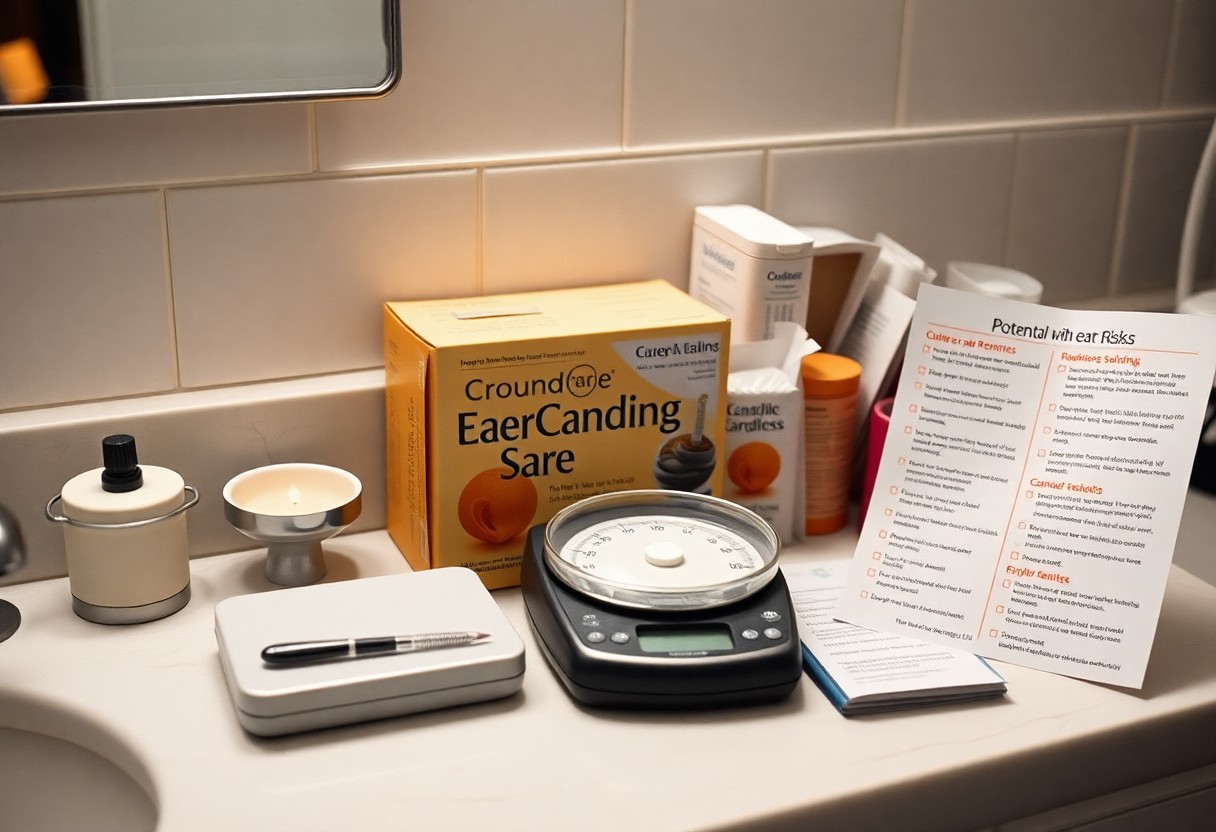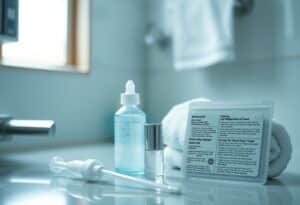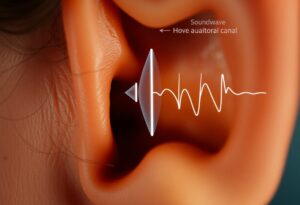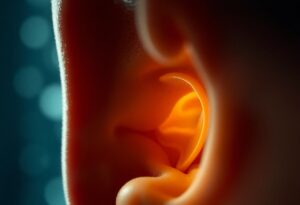There’s considerable debate surrounding ear candling, a practice some believe may help with earwax removal and promote overall ear health. However, you should be aware that many medical professionals warn against its use due to potential risks and minimal scientific support for its benefits. In this post, you will discover the truth about ear candling, including its supposed advantages, associated dangers, and expert opinions that will help you make an informed decision about whether this practice is right for your ear care routine.
Key Takeaways:
- Ear candling does not effectively remove earwax and can potentially cause injury.
- Research indicates that ear candling can lead to burns, ear canal blockages, and perforated eardrums.
- Health professionals generally advise against the practice due to the lack of evidence supporting its safety or efficacy.
The Origins of Ear Candling: Myths Versus Reality
Historical Context: Where Did This Practice Begin?
Ear candling has roots tracing back to ancient civilizations, with evidence suggesting that it originated among the ancient Egyptians and later adopted by Native American tribes. Texts indicate that these cultures utilized ear candles for spiritual and health practices, believing they could purify the body and stimulate energy flow. The practice also appeared in various folk medicine traditions, where it was regarded as a remedy for ear issues and general wellness.
Cultural Significance: Ancient Rituals and Modern Popularity
The dual nature of ear candling reflects both its historical rituals and modern-day appeal. In ancient practices, these rituals often carried spiritual significance, believed to cleanse the body of toxins and restore balance. Today, ear candling has morphed into a popular alternative therapy, attracting individuals seeking natural remedies amidst a growing interest in holistic health. You may find it featured in wellness spas and holistic health circles, capitalizing on a blend of ancient wisdom and contemporary wellness trends.

The Science Behind Ear Candling: Debunking the Myths
The Mechanics of Ear Candling: How It’s Supposed to Work
Ear candling is based on the premise that the heat from a lit candle creates a vacuum that draws out earwax and impurities from the ear canal. Practitioners place a hollow candle in your ear, lighting the other end to supposedly create this suction effect. Advocates argue that the process promotes ear health, relaxation, and general wellness. However, these claims lack scientific validation and do not account for the fundamental anatomy and physiology of the ear.
Scientific Studies: What Research Reveals About Its Efficacy
Research surrounding ear candling consistently shows little to no benefit regarding earwax removal or health. Multiple studies have demonstrated that ear candling does not effectively remove earwax and may leave residual candle wax in the ear. For instance, a 2007 study published in the *Archives of Otolaryngology – Head & Neck Surgery* found that ear candling posed no health benefits while risking injury, such as burns and ear canal obstruction.
In 2010, a review conducted by the American Academy of Otolaryngology-Head and Neck Surgery reinforced these findings, asserting that ear candling is ineffective for wax removal and can lead to serious complications such as tympanic membrane perforation. Participants report instances of wax buildup post-treatment rather than the intended cleansing effect. These studies collectively underscore that ear candling lacks credible evidence supporting its purported benefits and poses more dangers than solutions.

Potential Benefits: Are There Any Real Advantages?
User Testimonials: Anecdotal Evidence of Positive Experiences
Many users report feelings of relief and relaxation after ear candling sessions. Testimonials often highlight a sense of clarity, reduced pressure in the ears, and improved breathing. Some individuals claim it enhances their overall well-being, attributing these positive outcomes to the ritual itself rather than the efficacy of the practice. While these experiences can be compelling, the absence of clinical data makes it challenging to draw definitive conclusions.
Psychological Effects: The Role of Placebo in Alternative Therapies
The psychological aspect of ear candling plays a significant role in perceived benefits. Users often enter the process with hopeful expectations, which can trigger a placebo effect. This effect may result in improved mood, perceived reduction in symptoms, and a general sense of wellness that can stem from the belief that the treatment is effective.
Placebo effects are well-documented in various alternative therapies, including ear candling. Research shows that when individuals anticipate positive results from a treatment, their brains can release endorphins and other chemicals that promote feelings of wellness. This psychological interplay can result in genuine benefits, independent of the actual efficacy of the treatment itself. The power of belief in the healing process cannot be underestimated, influencing everything from pain perception to anxiety levels, shaping users’ overall experience of alternative practices like ear candling.
The Risks and Dangers of Ear Candling: What You Need to Know
Documented Adverse Effects: Injuries and Infections
Reports of injuries related to ear candling are numerous, with serious cases documented in medical literature. Burns from the hot wax and candle flame can severely damage the ear canal or surrounding skin. Additionally, improper application can lead to ear drum perforation or even introduce bacterial infections, complicating what was meant to be a simple wellness practice.
Misinterpretations of Ear Health: The Harmful Consequences
Many misunderstand ear health and assume ear candling can resolve issues like hearing loss or earwax buildup. This misconception can lead you to forgo crucial medical advice and treatments, ultimately worsening your condition. By opting for ear candling instead of professional care, potential serious problems may be ignored, resulting in chronic pain or permanent damage.
Misinterpretations around ear health can create a false sense of security. For instance, you might believe that ear candling eliminates wax, overlooking the fact that some earwax is beneficial for ear health. Relying on this method can also mask underlying issues such as ear infections or eustachian tube dysfunction, delaying necessary intervention. Ignoring professional evaluation not only exacerbates the original problem but could introduce new complications, leading to a cycle of ineffective treatments and worsening symptoms.
Expert Opinions: What Audiologists and ENT Specialists Say
Clinician Perspectives: The Medical Community’s Consensus
Most audiologists and ENT specialists unanimously advise against ear candling, citing a lack of scientific evidence to support its effectiveness. Research shows that this method can lead to serious injuries, burns, and even ear canal obstructions from wax residue. Recommendations from health organizations emphasize that safe and effective alternatives, such as professional ear cleaning, should be utilized instead.
Alternative Views: Some Support for Limited Usage
Despite the prevailing medical consensus, a small subset of practitioners and enthusiasts argue that ear candling can provide subjective benefits for certain individuals under specific conditions. They suggest that in instances of minor ear wax buildup, it may help promote relaxation and a perceived sense of well-being. However, the absence of rigorous scientific validation holds back broader acceptance within the medical community.
Some advocates point to cases where individuals have reported relief from symptoms like mild congestion or tension, asserting that the ritualistic aspect of ear candling can enhance relaxation. They often emphasize a holistic approach, suggesting it may aid in stress reduction rather than serve solely as a treatment for earwax accumulation. Nonetheless, such anecdotal evidence does not replace clinical guidelines and should be approached with caution, particularly given the potential for harm.
Guidelines for Safe Practices and Alternatives to Ear Candling
Recommended Ear Care Methods: Best Practices to Follow
Maintaining ear health can be achieved through simple practices such as regular cleaning with a damp cloth, avoiding the use of Q-tips inside the ear canal, and using saline sprays to help dissolve earwax. For individuals prone to excess wax buildup, a few drops of mineral or baby oil can aid in softening wax for easier natural removal. It’s crucial to consult a healthcare professional before attempting any new ear care routine.
Alternative Treatments: Effective Options for Ear Wellness
Several alternatives to ear candling can effectively promote ear wellness, including professional ear irrigation, warm compresses for discomfort, and over-the-counter earwax removal drops. These treatments prioritize safety while addressing common ear issues.
Ear irrigation, performed by healthcare professionals, involves flushing the ear canal with water or saline to remove stubborn wax buildup. This method is safe and reduces the risk of injury associated with home remedies. Warm compresses can relieve discomfort and pressure in the ears, especially during colds or allergies. For ongoing wax issues, over-the-counter drops containing carbamide peroxide can safely soften and assist in the removal of excess wax, making it easier for your body to clear it naturally. These practices ensure you prioritize your ear health without the risks associated with ear candling.
A Personal Reflection: The Appeal of Alternative Healing
The Search for Natural Remedies: Motivations Behind Popularity
Your quest for natural remedies often stems from a desire to reclaim control over your health. This growing inclination reflects a broader skepticism towards conventional medicine, particularly among those seeking holistic approaches, personalized treatments, and avoidance of pharmaceutical side effects. Many individuals feel drawn to alternatives like ear candling because they promise a more gentle, organic route to wellness, tapping into long-standing cultural practices that emphasize natural healing.
Individual Responsibility: Making Informed Choices in Health
The responsibility for your health lies with you, and that includes understanding the implications of alternative treatments. Critical examination of practices is crucial, given the limited regulation surrounding alternative therapies. Researching available evidence, seeking professional guidance, and assessing personal health conditions help you navigate the landscape of alternative healing. Empower yourself by asking questions about safety and efficacy, ensuring that choices align with your wellness goals and informed consent.
Equipping yourself with knowledge is a powerful tool in making health decisions. You can consult credible sources, read scientific studies, and even connect with healthcare professionals who are open to discussing alternative practices. By analyzing testimonials and dissecting anecdotes with skepticism, you create a balanced perspective. Being proactive about understanding the potential benefits and risks of treatments like ear candling, which lacks significant scientific backing, allows you to prioritize your wellbeing while avoiding pitfalls associated with misinformation.
Summing up
The evidence indicates that ear candling is not an effective method for earwax removal and may actually pose risks to your health. You should be aware that potential injuries and complications can arise from this practice. It’s necessary to consider safer, proven alternatives for maintaining ear health and to consult a healthcare professional for reliable advice.
FAQ
Q: What is ear candling?
A: Ear candling is an alternative remedy that involves placing a hollow candle in the ear canal and lighting it in an attempt to remove earwax and promote healing.
Q: Does ear candling effectively remove earwax?
A: There is no scientific evidence supporting that ear candling effectively removes earwax. Studies indicate that most earwax remains intact after the procedure.
Q: Are there any risks associated with ear candling?
A: Yes, ear candling can pose several risks, including burns to the ear, hair, or face, obstruction of the ear canal with candle wax, and potential damage to the eardrum.
Q: What do medical professionals think about ear candling?
A: Many medical professionals advise against ear candling, citing a lack of evidence for its efficacy and potential safety concerns. They recommend safer, proven methods for earwax removal.
Q: What are safer alternatives to ear candling for earwax removal?
A: Safer alternatives include using over-the-counter earwax softening drops, a bulb syringe to flush the ear with warm water, or consulting a healthcare provider for professional cleaning.



